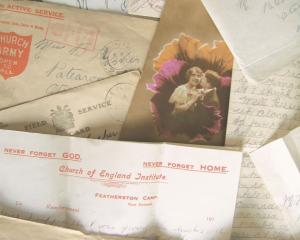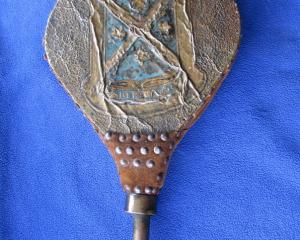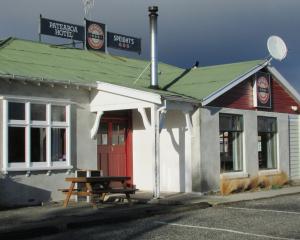A reader has kindly sent me her great-grandfather's diary, and suggested I pass it on in due course to what she called ''the Settlers Museum'' - poor old thing.
The diarist is Angus McAngus, who arrived in January 1862 on the Chariot of Fame and set about building a two-roomed wattle and daub cottage on a section in Maclaggan St.
(''Daub'' is a mixture of wet clay, sand, animal dung and straw).
The diary shows just what an energetic new settler Angus was:
• 6 Feb: gathered manuka and saplings for wattles and filled the cart with horse manure from the roadside.
• 7 Feb: cartload of sand from the beach - took all day.
• 8 Feb: clay from hillside and straw from J.C. Bartholomew (5 shillings)
• 9 Feb: Lord's Day. To morning service and heard Dr Stuart preach from Luke 6:48 ''He is like a man which built an house, and digged deep, and laid the foundation on a rock.''
• 10 Feb: dug up section and found rock.
• 11 Feb: mixing daub. Children helping by paddling in the mixture. Gave them a shilling. Sorted out wattles. Found timber off-cuts from building site to make windows. Bought second-hand door from Tom Gow in Rattray St.(10 shillings)
• 12-14 Feb: erecting cottage with help from Jock McMaster.
• 15 Feb: McMaster asked for 16 shillings but I gave him 12.
• 16 Feb: Lord's Day. To evening service and heard Dr Stuart preach from Luke 10:7 ''For the labourer is worthy of his wages.''
• 18 Feb: gave McMaster an extra 4 shillings. (Total costs 1 12 shillings). Moved in to new cottage. Fiona and children very happy.
The diary is an absolute treasure trove of information about early Dunedin.
Coincidentally, I received a request for money from Otago Settlers Association with information about their plan to build a settlers (as with the association name, the apostrophe is not used) cottage in the refurbished museum. The document has a superb photograph of an early settler's cottage, showing husband and wife (and their cat) standing proudly in front.
(Strangely, for a museum-related publication, the picture carries neither caption nor attribution).
The plan is to raise $200,000 to ''make this cottage a reality''.
I did a quick calculation. In 1862 Angus McAngus built a cottage for 1 12 shillings (about $130 these days) and the association is asking for $200,000 to build one today. I understand that a perfectly sound, modern two-bedroom ownership unit (including land) can be picked up for about $160,000 in St Kilda.
Obviously, there is more to this cottage than I thought and the association would have to cover extras like. -
• ''Cottage environment'' some soil and a few shrubs ($20) and a cat (?)'
• 'Prop production''- are there no 19th century bits and pieces already in the museum?
• ''Cottage wall''- the cottage already has four walls, surely?
• ''Audio effects''- surely Angus McAngus didn't suffer from audio rubbish?
• ''Special lighting''- Angus would have had a candle but lighting would help.
• ''Mannequins and clothing''- mannequins expensive but clothing already held, surely?
• ''Wattle and daub case, self lit''- what, I wonder, can this mean? I'm confused, and any campaign asking for money needs to leave the donor in no doubt about where the cash is going.
My small cheque will be on its way with Angus' diary but I still wonder why the cottage should cost so much. The land is free and there is no need to install the really expensive stuff, like drainage, water pipes, telephone lines, broadband access and satellite dishes - stuff which Angus abhorred.
The flier, in its odd wording, tells us that the cottage will make us ''immediately aware of the Scottishness they set out to create''.
Is there something more expensive about a Scottish wattle and daub cottage than one built in Ireland or Wales?
The discrepancy between $130 and $200,000 had me beaten until a news item explained it all.
Part of the huge extra cost is probably the Dunedin City Council charging itself for granting itself a building permit and budgeting for building inspectors to check out the cottage twice a day (maybe $50,000).
Straw and animal waste buildings are a specialised field these days, so no doubt one of the world's very few ''Scottish wattle and daub cottage'' experts has to be called in at $5000 a day (say $50,000).
Probably an accurate assessment, given the council's bill for consultants runs to $32 million for the last three years. Heritage architecture is an expensive business. Maybe an extra $20,000.
The heritage plan for the upgrading of Speight's took 144-pages.
But the remaining $80,000 odd?
Obviously, the Otago Settlers Association is being ripped off by a very cunning and very greedy horse dung merchant.
- Jim Sullivan is a Dunedin writer and broadcaster












